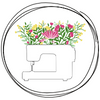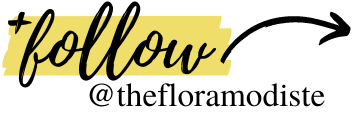Which Fabric To Use? A Comprehensive Fabric Guide

Hello friends! This week's post is a special one--I have been wanting to do a comprehensive fabric guide on here for quite some time now. Because we all have that question once a design is in our heads and the sewing pattern is ready for cutting: "Which fabric should I use?"
The answer to that question isn't always an easy one. (At least it hasn't always been easy for me.)
Sometimes, when working on a design, I have this particular fabric in mind. And I want it to work SO MUCH. But once the sample is sewn up, I can just see that the fabric I wanted so desperately to work.. Definitely isn't going to work.
And having that eye for knowing when a fabric will work for a certain project (or more often, won't work) has really only developed over years and years of sewing all kinds of different projects.

I remember in my very first textile class at FIDM, my instructor said that if she ever heard a student use the word "flowy" when referring to the properties of a fabric.. She was going to throw that student out of her classroom.
Not even kidding, friends.
(Ready for your very own comprehensive fabric guide? Grab this downloadable, printable guide today and use it when deciding which fabric to use for a sewing project tomorrow.) 

This week, I will actually be heading up to LA for the LA Textile Show. I haven't been to a textile show since I was living and working in New York, so I KNOW things have changed quite a bit since then. And I'm pretty excited to see what the fabric industry is up to now.
I figured that since I will be attending a textile show this week, it would be the perfect time to put together and release a comprehensive fabric guide.
Now keep in mind: This guide does not include every. single. fabric. out there. That would literally be impossible. But what it does contain is a pretty wide variety of fabrics, including ones that I have used in my own past projects.

My hope is that this comprehensive fabric guide will help give those of you less experienced with fabric properties an idea of what fabrics work best for which projects.
And will result in you loving more of your sewing projects.. Because the wrong fabric can literally ruin a project. (Been there, done that.)
And who wants to spend ALL that time sewing up a project, to then never wear it because you picked the wrong fabric? #nothanks So. Let's get started, shall we?
(Ready for your very own comprehensive fabric guide? Grab this downloadable, printable guide today and use it when deciding which fabric to use for a sewing project tomorrow.) 
A comprehensive fabric guide: Two main categories

When doing my research for this post, I pulled most of my information from The Fashion Designer's Textile Directory, by Gail Baugh. This is a book that I have used since I was in FIDM, for almost every single project I have created.
This book states that there are FOUR main characteristics that define different types of fabric:

Now, IMHO, I think that can be narrowed down to just two characteristics: Structure & fluidity. To me, it seems that expansion is just a sub-category of structure. And compression is a sub-category of fluidity.
Because fabrics that expand have structure. (Otherwise, if they didn't have structure, they would literally just collapse.) And fabrics that compress (i.e. knits) follow the fluidity of the body. (Just in a different way than fabrics that are typically thought of as fluid.)
So, for the sake of ease, I have narrowed the main categories for this comprehensive fabric guide down to two basic characteristics: Structured fabrics & fluid fabrics.
(Ready for your very own comprehensive fabric guide? Grab this downloadable, printable guide today and use it when deciding which fabric to use for a sewing project tomorrow.) 
A comprehensive fabric guide: About structured fabrics

As the name implies, structured fabrics are best used for designs that are intended to stand away from the body. Structured fabrics are are also ideal when working with unusual seam work, as those details will stand out much more. (As compared to when working with a fluid, lighter fabric.)
The ultimate deciding factor when contemplating working with a structured fabric is if the design is meant to hold its shape and stay in place, rather than collapse when released.
Fabrics that are intended for structured designs often need to be mid-heavyweight, to be able to hold that shape. The exception is when working with more expansive fabrics--These types of fabric are often lightweight, but are incredibly stiff and can hold a shape without collapsing.
Basically, if your design needs to hold a certain shape.. Choose a structured fabric.
I LOVE working with structured fabrics.. I honestly think they are easier to work with than fluid fabrics. Structured fabrics are less prone to fray, slip, or deteriorate while sewing. (And if you are a slow sewer, like I am, then this is very important.)
(Ready for your very own comprehensive fabric guide? Grab this downloadable, printable guide today and use it when deciding which fabric to use for a sewing project tomorrow.) 
A comprehensive fabric guide: Examples of structured fabrics


So. Like the idea of working with a structured fabric? But not sure if it will work for your particular sewing project? We have definitely sewn multiple projects here on The Flora Modiste that involve structured fabrics. A few examples include:
- The Clark Crop Pant: I chose to use a structured fabric for this design because I wanted the wide leg of the pant to hold its shape, rather than collapse against the leg. I LOVE the look of a good cropped pant, and the Clark is no exception.
- The Mauve Shirt Dress: As is often the case, most tailored shirts use structured fabrics. Why? Because tailored shirts are intended to have a crisp, stiff look to them. Which just so happens to be what structured fabrics are all about.
- The Violet Midi: This project is an example of using an expansive fabric. While the fabric itself is very lightweight, it is still voluminous, and stands away from the body. In no way does it form to the fluid shape of the body. Expansive fabrics are ideal when working with designs intended to have a voluminous, full silhouette.
- The Ashby Coat: The fabric used for the Ashby is essentially the definition of s structured fabric. It's heavy, stiff, and shows off unusual seam work beautifully. Structured fabrics are ideal when working with heavy coats, not only because they often keep you warmer, but because they can endure the wear and tear of a long winter.
Additional examples of structured fabrics include: Broadcloth, poplin, taffeta, shantung, linen, sheeting, muslin, canvas, denim, cavalry twill, corduroy, melton, bonded fabrics, and leather.
(Ready for your very own comprehensive fabric guide? Grab this downloadable, printable guide today and use it when deciding which fabric to use for a sewing project tomorrow.) 
A comprehensive fabric guide: About fluid fabrics

Again, as the name implies, fluid fabrics flow over the body, following the shape of the human form. These types of fabrics perform like a liquid: The human form provides the shape, and the fabric flows over it.
Unlike with structured fabrics that hold their shape, fluid fabrics collapse when released. They possess a liveliness, a springiness. As The Textile Directory says, "they have a personality".
Fluid fabrics are often not heavy, as their function is to drape and flow. Lightweight & medium weight fabrics are most often used for designs that require a more fluid fabric. IMHO, fluid fabrics are a bit more difficult to work with.
Certain fabrics can slip incredibly easily while sewing, which is an issue that I struggle with quite a bit on a regular basis.
The exception to difficult sewing, when it comes to fluid fabrics, is when working with knits. I LOVE working with knits. While knits are considered a compression fabric in The Textile Directory, I consider them more of a fluid fabric. Why? Because knits are often used for more form fitting designs, following the flow of the human body.
(Ready for your very own comprehensive fabric guide? Grab this downloadable, printable guide today and use it when deciding which fabric to use for a sewing project tomorrow.) 
A comprehensive fabric guide: Examples of fluid fabrics


So. Love the idea of sewing with a more fluid, draping fabric? We have definitely used a TON of fluid fabrics for past sewing projects here on The Flora Modiste. A few examples include:
- The Deandra Knit: The beautiful knit that I used for the Deandra isn't quite as fluid as most knits.. But it definitely does still have some movement to it. Rather than holding it's boxy, kimono shape, the fabric falls off of the shoulders, creating the comfiest fit.
- The Dany Sheath: My very favorite dress! Just by looking at the dress, you can see that it drapes off of the body beautifully. This fabric would also have worked well with a different design, one that required a more compressed fabric/silhouette.
- The Wavy Cardigan: The lightweight velvet used for this project literally falls off of the body. It is SO lightweight, it almost has no structure. This was definitely a very difficult fabric to work with, because it has so little structure and weight to it.
- The Ilma Raglan: Just looking at the godet on the Ilma, and you will see why I used a fluid fabric for this project. The godet flows beautifully, just hanging from the rest of the sweater. This is where fluid fabrics shine: When they can just hang perfectly from the body.
Additional examples of fluid fabrics include: Chiffon, satin, jersey, interlock, sweater knits, mesh, lace, textured knits, polar fleece, velvet, velour, and medium-heavyweight sweater knits.
(Ready for your very own comprehensive fabric guide? Grab this downloadable, printable guide today and use it when deciding which fabric to use for a sewing project tomorrow.) 
A comprehensive fabric guide: In summary

So, not too complicated. Right? To me, when asking the question "Which fabric should I use?" the main question you should really be focusing on is structure vs. fluidity. A few questions that I think would really be helpful to ask yourself when deciding on a fabric:
- Do I want my design to be structured and hold its shape? Or to be more fluid, and flow off of the body? ANSWER: If desiring a structured design, pick a structured fabric. If going for a more fluid design, pick a fluid fabric. (Obvi)
- Do I want to use a lightweight fabric? Or a heavier fabric? ANSWER: Lightweight fabrics are more often used for fluid designs. (With the exception of expansive, structured fabrics.) Heavier fabrics more often work best for structured designs.
- Am I working with a knit fabric for this design, or a woven fabric? ANSWER: While woven fabrics work for both structured & fluid designs, knit fabrics (more often than not) will work best for fluid designs. If going for a more structured design, then you can most likely rule out working with knits.
OF COURSE, there are exceptions to all of the above. Certain knit fabrics can work beautifully in a structured design. Heavy fabrics can be transformed into a beautiful, fluid garment with the right draping techniques. But more often than not, the above holds true.
And for your home sewing purposes, I think this comprehensive fabric guide will really help you when asking that all important question: "Which fabric should I use?"
(Ready for your very own comprehensive fabric guide? Grab this downloadable, printable guide today and use it when deciding which fabric to use for a sewing project tomorrow.) 






